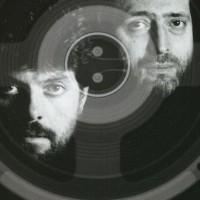One of the more fascinating experiments in combining rock and science fiction, I Robot sounds as innovative today as it did upon release in June 1977. Only the Alan Parsons Project’s second album, it stands as an ahead-of-its time hybrid of classic rock and modern technology.
Alan Parsons and collaborator Eric Woolfson initially envisioned the album as a sonic companion to Isaac Asimov’s novel I, Robot. Unfortunately Asimov had already sold the film rights to the story, though the author appreciated their concept. While loosely based on the book, I Robot instead focused on the uneasy relationship between human and machine. The questions it raised, well before the advent of our now technology-obsessed world, included “the extent to which, as human beings, we may or may not be pre-programmed and act in a robotic fashion, as well as the dangers of uncontrolled development of artificial intelligence,” according to the liner notes of a later Legacy edition reissue.
Each track tackles a facet of this overreaching theme, such as the hit “I Wouldn’t Want to be Like You.” Guest Alan Parsons Project lead singer Lenny Zakatek addresses the robot over a neo-disco beat, proclaiming that “If I had a mind to, I wouldn’t want to be like you.” Ian Bairnson’s blistering lead guitar and Stuart Tosh’s pounding drums emphasize emotion over a numb existence. The spanning ballad “Some Other Time” features vocalists Peter Straker and Jaki Whitren crooning over a Pink Floyd-esque soundscape. “Could it be that somebody else is looking into my mind?” they ask, fearing a machine takeover.
A minor rock radio hit, Alan Parsons Project’s “Breakdown” contains a sneering lead vocal by Alan Clarke. Its lyrics detail a rise to rebellion; in the beginning, the guitars wail as he claims “I breakdown in the middle and lose my thread,” signaling a loss of communication and ultimately human connection. As the song ends, however, a resounding chorus urges the narrator on: “Freedom, freedom, we will not obey; freedom, freedom, take them all away.” “Don’t Let It Show” sounds like the band’s take on a David Bowie record, with Dave Townsend’s vocal style a cross between Bowie and Roy Orbison. Like “Breakdown,” it serves as a rallying cry: “Even if it’s taking the easy way out; keep it inside of you. Don’t give in; don’t tell them anything,” Townsend pleads.
Other tracks create a mood, a feeling of floating through space. The Alan Parsons Project utilized then-new technology (ironic given the theme of I Robot) such as the EMS Synthi-A “suitcase” synth sequencer, a portable electronic pipe organ, and a keyboard instrument called the Projectron, the precursor to digital samplers. Pink Floyd’s fingerprints, in fact, exist throughout the album — not a surprising fact, given that Parsons had engineered Dark Side of the Moon.
The Legacy edition’s second disc of extras appealled most to hard core Alan Parsons Project fans. Snippets of interviews, early mixes of “Day After Day,” “The Naked Robot,” and an early demo of “Breakdown” stand among the rarities. Hearing the isolated chorus section from “Breakdown” does send a chill down the spine, and Whitren’s complete vocals from “Some Other Time” reveal the song’s beauty. Otherwise, the remastered album was the true star.
Today, I Robot seems prophetic in message and music. The Alan Parsons Project’s album details the struggle of man versus robot — or human versus technology — in a sophisticated and tuneful fashion, incorporating everything from rock to soul.
- The Rescued Early Paul McCartney Song That Completed ‘Beatles For Sale’ - December 4, 2024
- A Rare Beatles Cover Proves John Lennon Was Wrong About His Voice - November 26, 2024
- How John Lennon Came Roaring Back on the Beatles’ White Album - November 22, 2023




